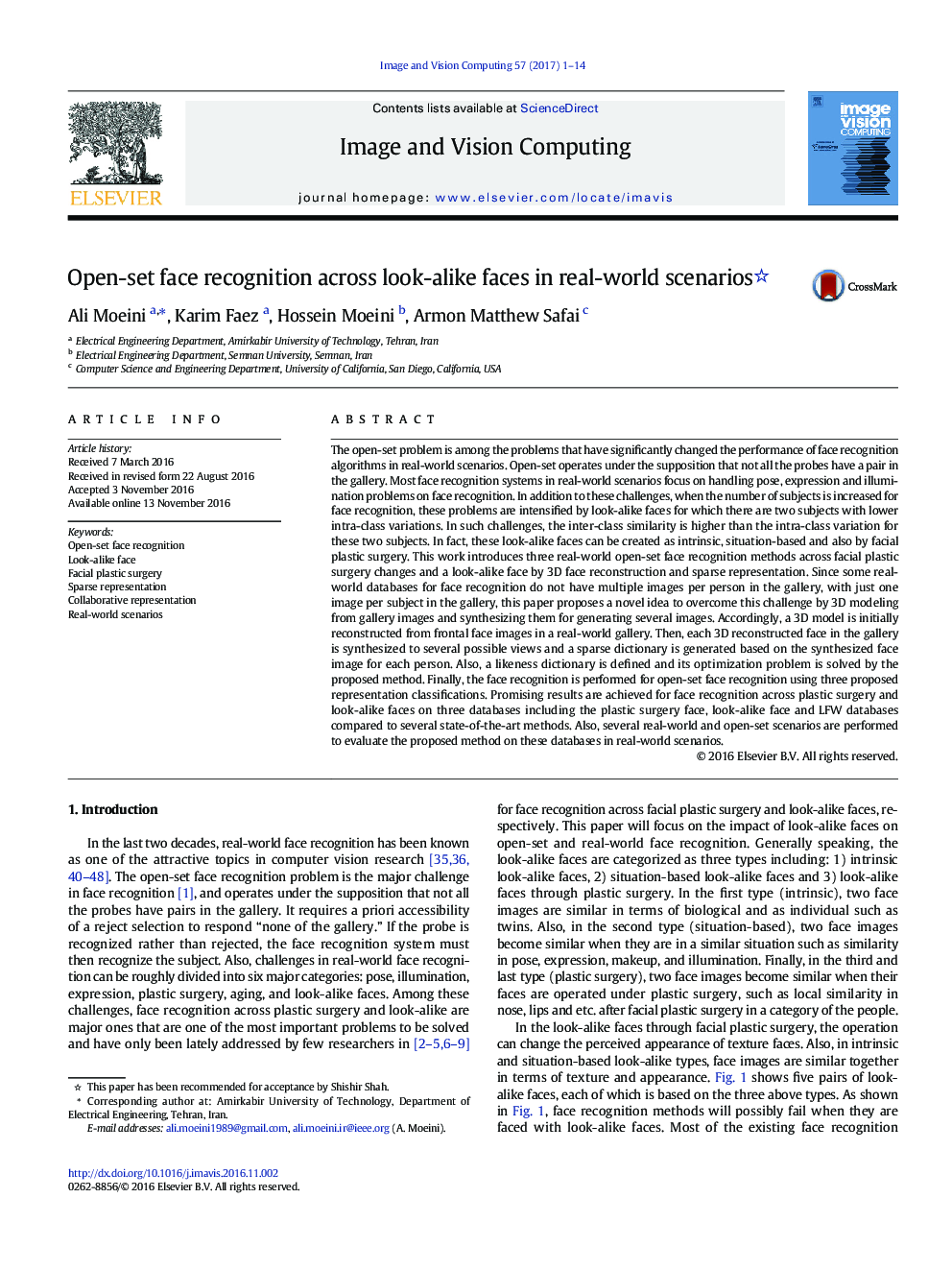| Article ID | Journal | Published Year | Pages | File Type |
|---|---|---|---|---|
| 4968996 | Image and Vision Computing | 2017 | 14 Pages |
â¢This paper uses 3D reconstructed models to recognize look-alike faces.â¢A feature is extracted from both facial reconstructed depth and texture images.â¢This paper proposes likeness dictionary learning.â¢Three open-set classification methods are proposed for real-world face recognition.
The open-set problem is among the problems that have significantly changed the performance of face recognition algorithms in real-world scenarios. Open-set operates under the supposition that not all the probes have a pair in the gallery. Most face recognition systems in real-world scenarios focus on handling pose, expression and illumination problems on face recognition. In addition to these challenges, when the number of subjects is increased for face recognition, these problems are intensified by look-alike faces for which there are two subjects with lower intra-class variations. In such challenges, the inter-class similarity is higher than the intra-class variation for these two subjects. In fact, these look-alike faces can be created as intrinsic, situation-based and also by facial plastic surgery. This work introduces three real-world open-set face recognition methods across facial plastic surgery changes and a look-alike face by 3D face reconstruction and sparse representation. Since some real-world databases for face recognition do not have multiple images per person in the gallery, with just one image per subject in the gallery, this paper proposes a novel idea to overcome this challenge by 3D modeling from gallery images and synthesizing them for generating several images. Accordingly, a 3D model is initially reconstructed from frontal face images in a real-world gallery. Then, each 3D reconstructed face in the gallery is synthesized to several possible views and a sparse dictionary is generated based on the synthesized face image for each person. Also, a likeness dictionary is defined and its optimization problem is solved by the proposed method. Finally, the face recognition is performed for open-set face recognition using three proposed representation classifications. Promising results are achieved for face recognition across plastic surgery and look-alike faces on three databases including the plastic surgery face, look-alike face and LFW databases compared to several state-of-the-art methods. Also, several real-world and open-set scenarios are performed to evaluate the proposed method on these databases in real-world scenarios.
